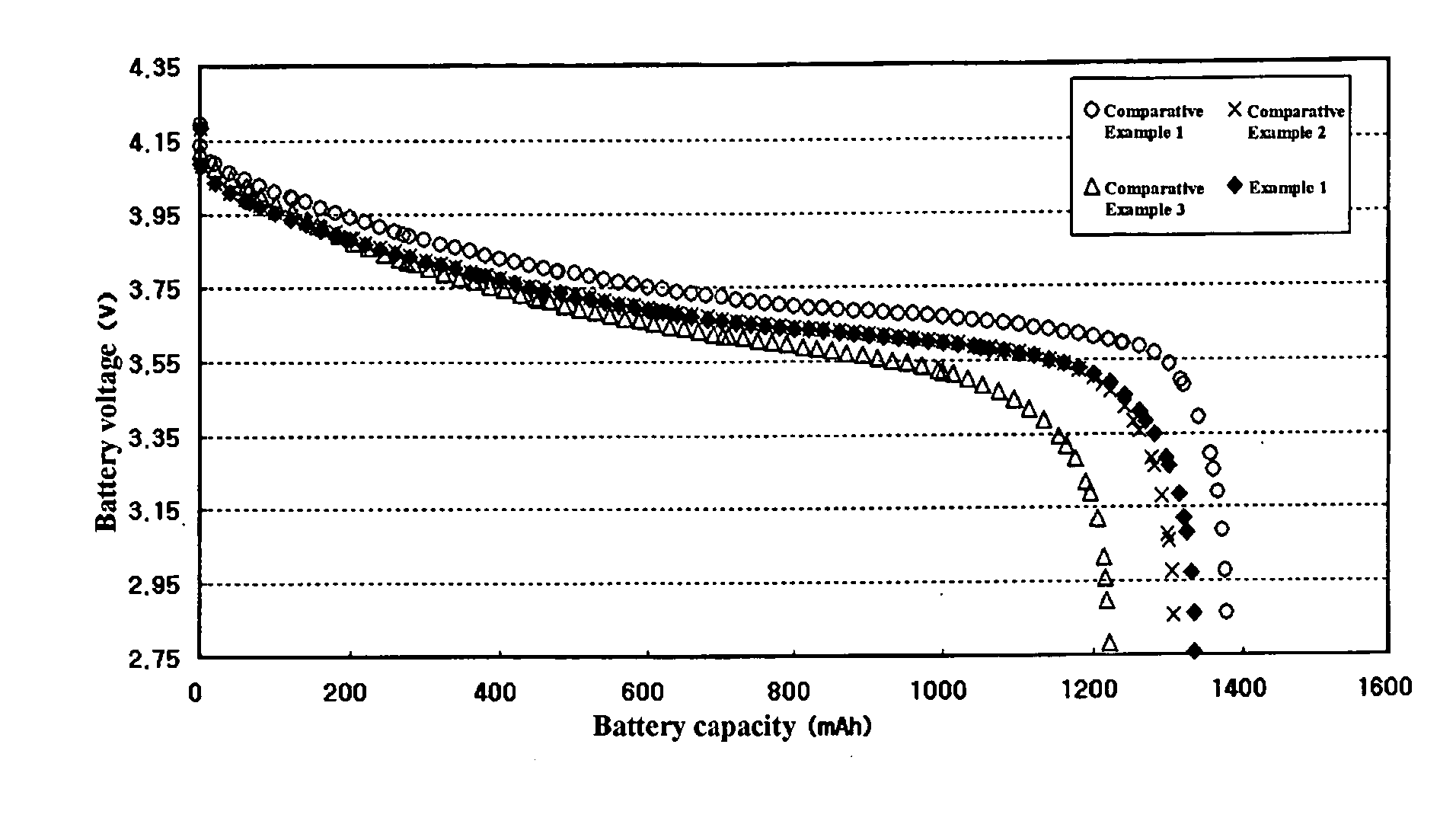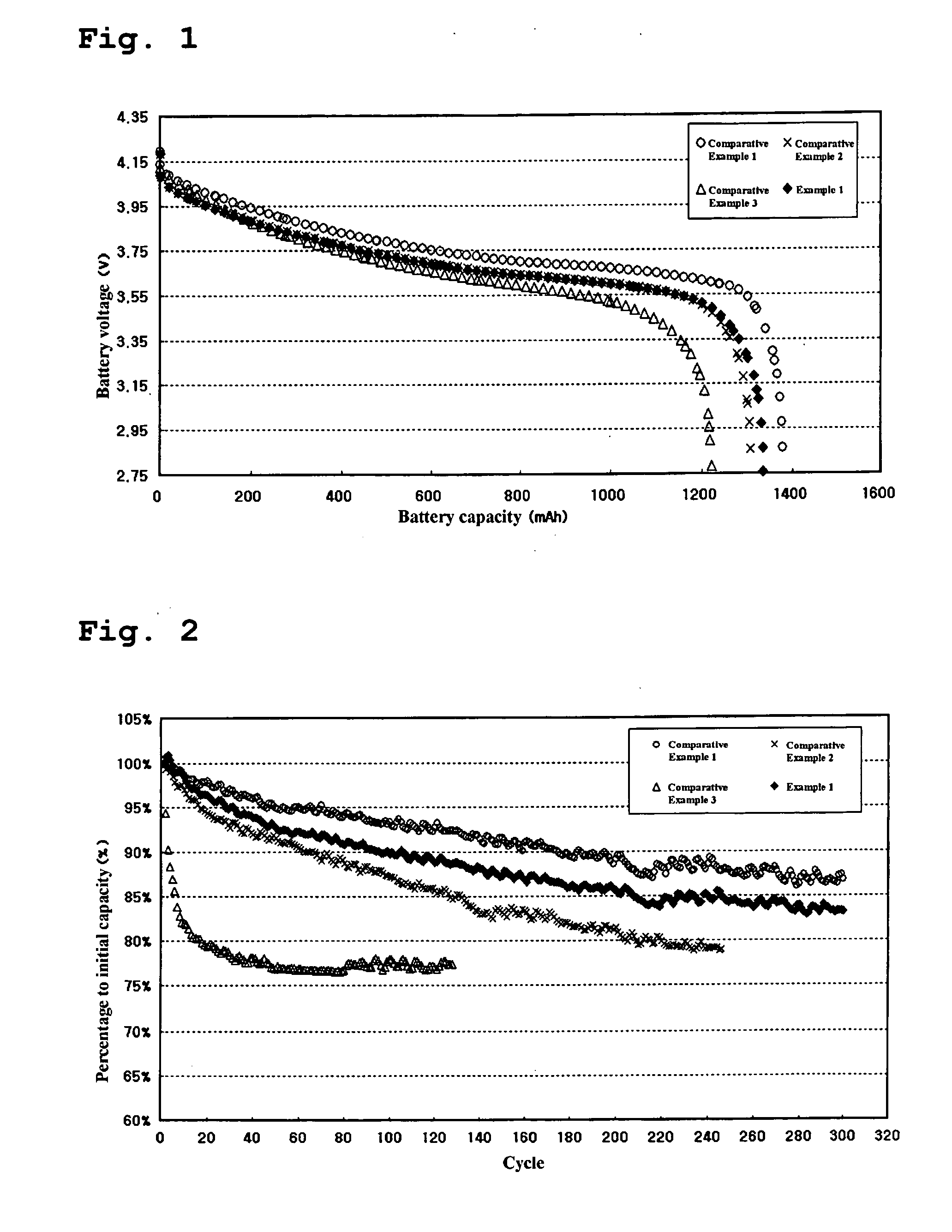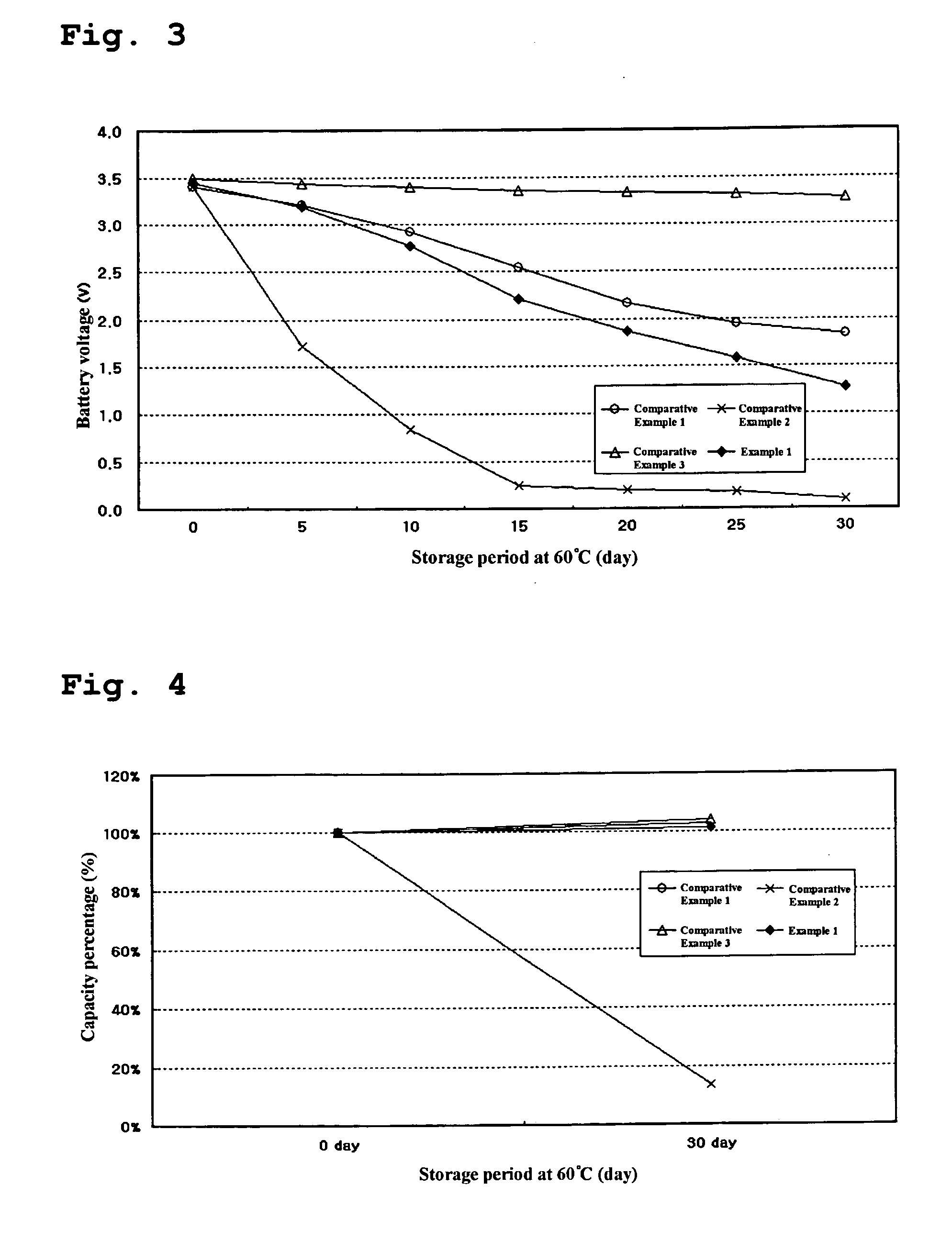Electrolyte for lithium ion battery to control swelling
a lithium ion battery and electrolyte technology, applied in the direction of non-aqueous electrolyte cells, cell components, cell component details, etc., can solve the problems of deterioration of high discharge rate performance, reduction of discharge capacity, and inability to charge/discharge the battery, so as to improve the intrinsic properties of lithium secondary batteries and reduce swelling
- Summary
- Abstract
- Description
- Claims
- Application Information
AI Technical Summary
Benefits of technology
Problems solved by technology
Method used
Image
Examples
example 1
[0030] 0.21 kg of PVDF (Poly(vinylidene fluoride)) as a binder was dissolved in 3 kg of N-methyl-2-pyrrolydone (NMP) as a binder solvent to prepare a binder solution.
[0031] 6.58 kg of LiCoO2 as an anodic active material and 0.21 kg of a conductive agent were dry-mixed and 6.79 kg of the previously prepared binder solution was added thereto to prepare a slurry for an anode. The slurry was evenly coated on a 15 μm thick aluminum foil as a current collector for an anode, dried and rolled using a roll press to form an anode.
[0032] In order to prepare a cathode, 0.48 kg of PVDF as a binder was dissolved in 4.22 kg of NMP as a binder solvent to prepare a binder solution, similar to the method for the anode.
[0033] 5.3 kg of carbon as a cathodic active material was mixed with the binder solution to prepare a slurry for a cathode. The slurry was coated on a 12 μm thick copper foil as a current collector for a cathode, dried and rolled using a roll press to form a cathode.
[0034] The anode...
experimental example 1
Test of Swelling Inhibiting Effect
[0039] The batteries prepared in the above Example and Comparative Examples were charged under a constant current-constant voltage (CC-CV) condition using a current of 600 mA and a charge voltage of 4.2 V and kept for one hour. The batteries were discharged to 2.75 V with a current of 600 mA and kept for one hour.
[0040] After removal of a gas generated by vacuum, the batteries were again charged under a CC-CV condition using a current of 600 mA and a charge voltage of 4.2 V and kept for one hour. The batteries were discharged to 2.75 V with a current of 600 mA and kept for one hour.
[0041] This procedure was performed twice and the batteries were charged with a current of 600 mA and a charge voltage of 4.2 V for 3 hours.
[0042] To determine a change in thickness of the battery at high temperature, each of the charged batteries was measured for thickness and kept in a hot chamber at 85° C. for 4 days. After 4 hours and 96 hours, the measurement of ...
experimental example 2
Test of Discharge Capacity
[0045] The batteries prepared in the above Example and Comparative Examples using different electrolytes were charged under a constant current-constant voltage (CC-CV) condition using a current of 600 mA and a charge voltage of 4.2 V and kept for one hour. The batteries were discharged to 2.75 V with a current of 600 mA and kept for one hour.
[0046] After removal of a gas generated by vacuum, the batteries were again charged under a CC-CV condition using a current of 600 mA and a charge voltage of 4.2 V and kept for one hour. The batteries were discharged to 2.75 V with a current of 600 mA and kept for one hour. Thus, the battery activation step was completed.
[0047] The activated batteries were charged under a CC-CV condition using a current of 600 mA and a charge voltage of 4.2 V for 2.5 and kept for 10 minutes. Then, the batteries were measured for the operation voltage and discharge capacity while being discharged with a current of 600 mA. The results ...
PUM
| Property | Measurement | Unit |
|---|---|---|
| thick | aaaaa | aaaaa |
| thick | aaaaa | aaaaa |
| thick | aaaaa | aaaaa |
Abstract
Description
Claims
Application Information
 Login to View More
Login to View More - R&D
- Intellectual Property
- Life Sciences
- Materials
- Tech Scout
- Unparalleled Data Quality
- Higher Quality Content
- 60% Fewer Hallucinations
Browse by: Latest US Patents, China's latest patents, Technical Efficacy Thesaurus, Application Domain, Technology Topic, Popular Technical Reports.
© 2025 PatSnap. All rights reserved.Legal|Privacy policy|Modern Slavery Act Transparency Statement|Sitemap|About US| Contact US: help@patsnap.com



